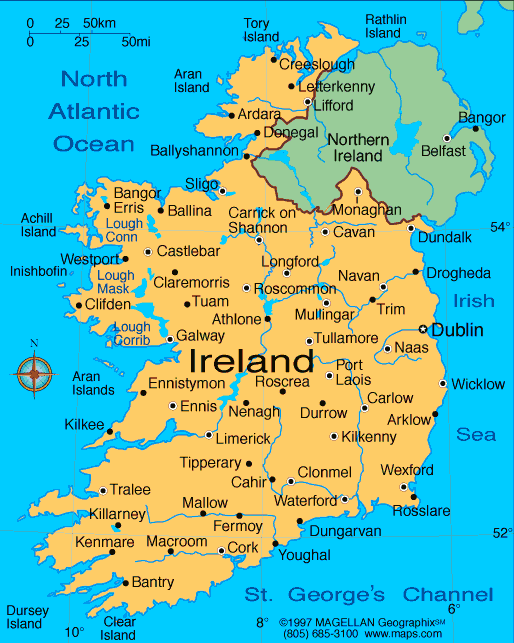Between 400 million and 300 million years ago, Ireland sank beneath a warm, calcium-rich sea. During this time many coral reefs were formed underwater creating the limestone that makes up about 65 percent of the rock mantle on the island. When the waters diminished, many forests and swamps were able to flourish.
The limestone is covered with glacial deposits of clay and sand, typically found in the lowlands with bogs and lakes. The southern mountains of Ireland are composed of red sandstone and limestone in the river valleys. In the North and West regions of the island mountains are composed of mainly granite. In the east many plateau's are formed from basalt, which is a type of volcanic rock.
The Burren, located in the Mid-West portion of Ireland is known for it's unusual abundance of limestone and bedrock, with little or no soil in the inner most areas of the island.
Mountains, Lakes, and Rivers throughout Ireland
Ireland
Wednesday, April 4, 2012
Friday, March 9, 2012
Ireland's Climate Basics & Processes
Ireland
is surrounded by the Atlantic Ocean and the Gulf Stream giving the country a
maritime climate. Ireland receives a lot of precipitation contributing to its very lush and green landscape.
Summers in the country are typically warm with
sunshine, with the occasional intermittent rainy day. Ireland’s most humid
months are in July and August usually leading to prevalent thunderstorms.
Winter weather usually consists of heavy clouds and more rain. Larger mountains
will typically be snowcapped, with the average temperature being around 41 ° F
and will usually go below freezing at night.
The climate differs throughout the island. Mountainous
regions and the areas east of the mountains (due to prevailing winds) will
typically have more rain than the lower regions of Ireland. The southern areas are generally the warmest,
while the inland areas have the least amount of heat (due to being further away
from the warm ocean waters).
Wednesday, February 8, 2012
Ireland, Earth's Place and Function
Subscribe to:
Comments (Atom)







